Give back to nature
Experiment with your foraged finds in style. Every purchase from our kitchen and dining range helps fund our vital work to plant and protect trees and woods across the UK.
Shop now
Digital content editor
Go for a walk in September and you’ll find an abundance of edible wild food.
Early autumn is the best time to enjoy foraging. It's when hedgerows and trees are heavy with the jewel-like colours of ripening fruits and nuts, while damp woodland floors become a playground for seasonal mushrooms.
Gathering and eating wild food is a great way to understand and respect nature. But overenthusiastic collecting can put some species at risk, so please forage sustainably. Read on to discover some of the best wild foods to look out for in the UK in September, along with some foraging tips.
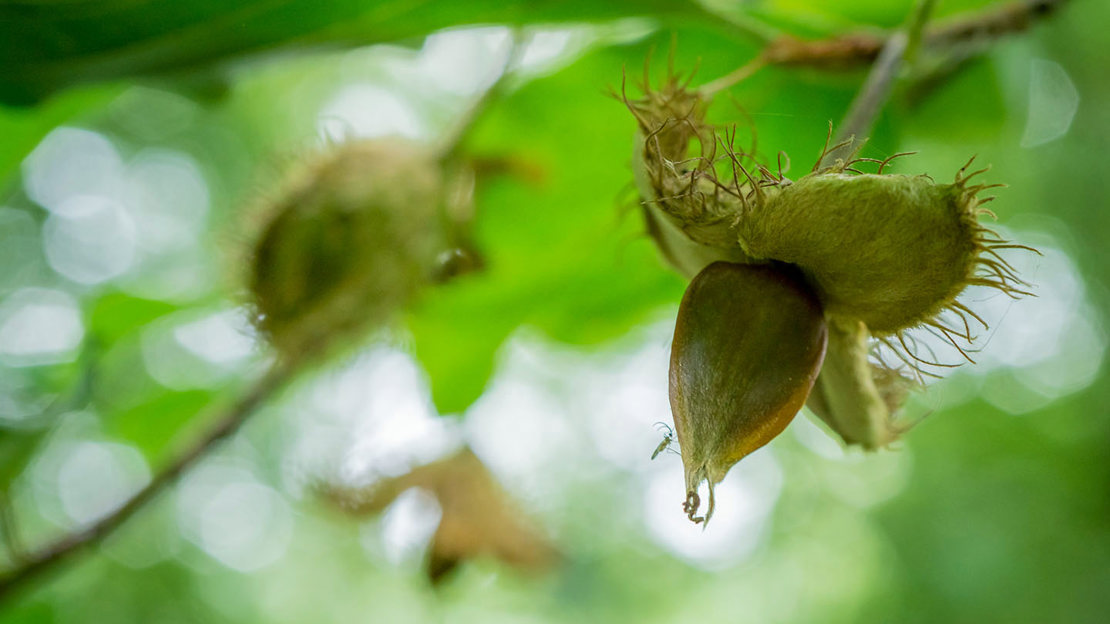
Each beech tree produces a bumper crop of nuts, also known as a beech mast, every 4-5 years. When you find them they could be abundant, though squirrels, badgers and birds may have got there first.
How to use it: the nuts make a tasty raw nibble when you’re out and about. Scrape off the outer brown skin to reveal the triangular seed. They can be used in a similar way to pine nuts, sprinkled on salads and risottos. Roast in the oven then place between two tea towels and rub to remove shells. Beech nuts can be slightly toxic if consumed in large quantities due to the tannins and alkaloids.
What to look for: keep an eye out for pairs of three-sided nuts in bristly cases from mid-September throughout October.
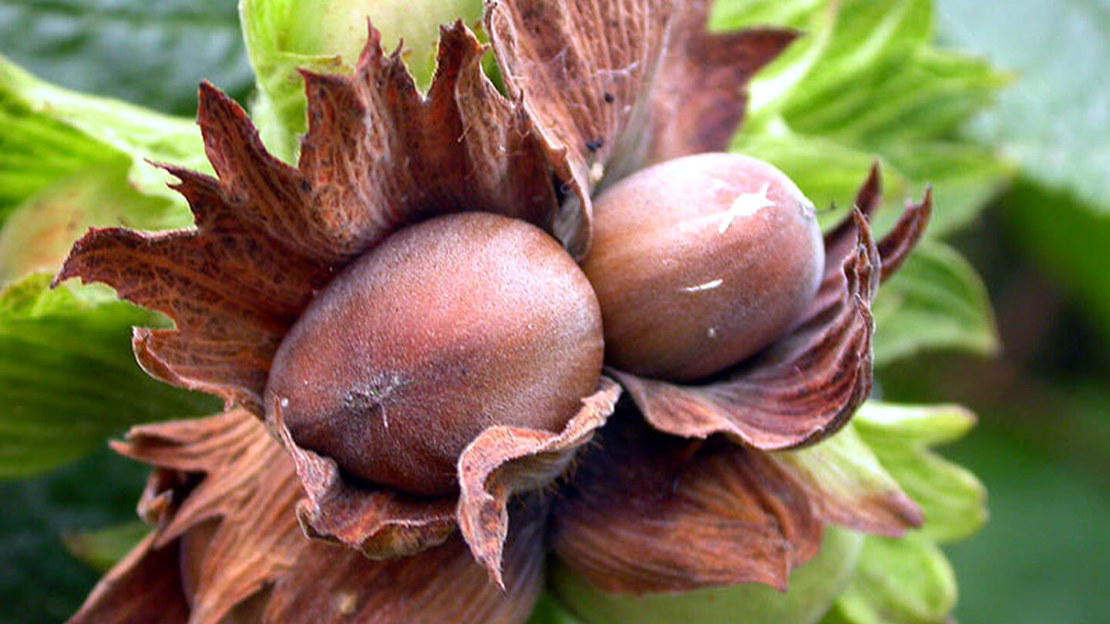
Often referred to as cobnuts, hazelnuts have been cultivated and eaten for thousands of years – their rich, nutty taste valued by both humans and wildlife. Most hazelnuts ripen in late summer and early autumn, producing abundant crops in woodlands and hedgerows.
How to use it: hazelnuts can be eaten raw as a tasty snack or an addition to salads, though roasting them brings out a sweeter, nuttier flavour. A good tip is to forage for them while they’re still green and leave them to ripen fully in a dry, dark place. Roast hazelnuts can be blended with butter to make a delicious spread, or used as an ingredient in a variety of cakes and other sweet treats.
What to look for: hazel trees produce oval nuts in hard outer shells surrounded by papery coverings. The nuts develop in small clusters and are safe to eat once their coverings begin to peel back from the shell.
Experiment with your foraged finds in style. Every purchase from our kitchen and dining range helps fund our vital work to plant and protect trees and woods across the UK.
Shop now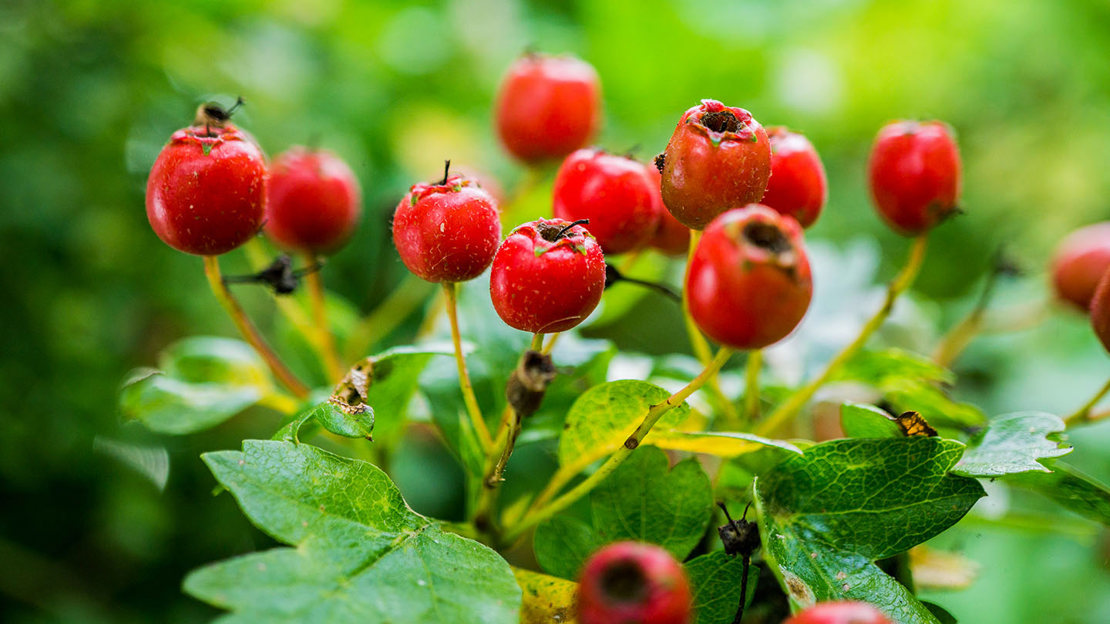
The leaves of hawthorn are traditionally known as 'bread and cheese' - usually referring to their very basic culinary qualities. But some people eat the leaves and berries together, calling the leaf the ‘bread’ and the berry the ‘cheese’.
How to use it: haws are generally not consumed raw due to their large stones and dry, starchy flesh. They are much better when cooked as this brings out a sweet, mildly spicy flavour. Haws go well in jams and jellies due to their high pectin content, which helps these foods set, or can be used to make vinegar or ketchup. For a hedgerow tipple, try hawthorn schnapps.
What to look for: the round fruits are about 1cm long and resemble small apples with a single seed. They are a common sight in hedgerows and are best picked when they’re a deep red colour, indicating that they are fully ripe.
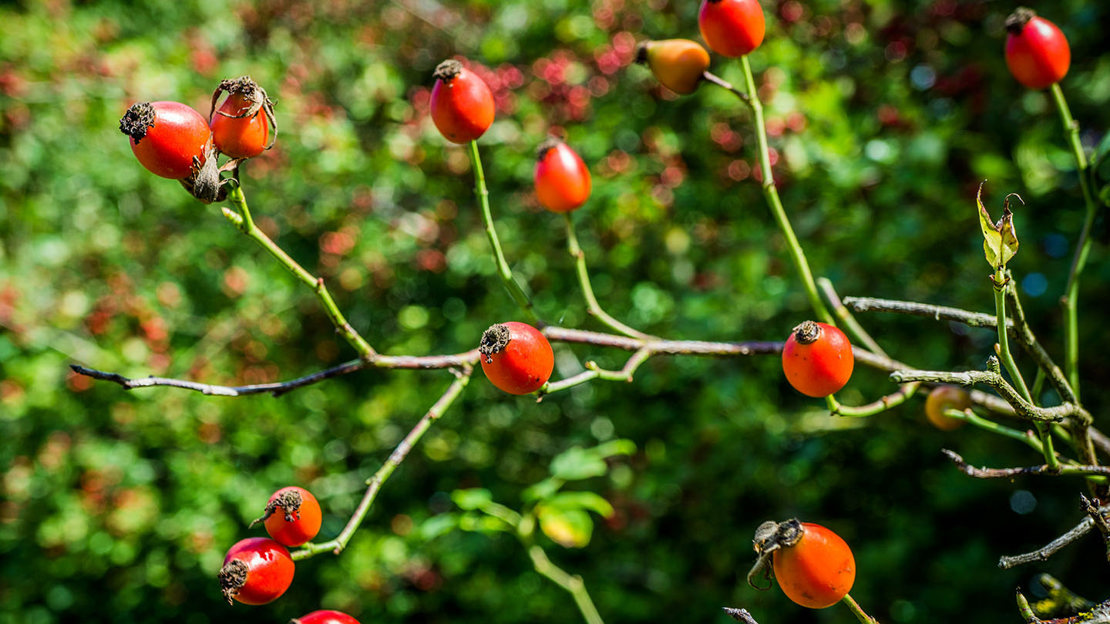
Rosehips are the red and orange seed pods of rose plants commonly found in hedgerows. They are at their best in the autumn and have a fleshy covering that contains hairy seeds. The irritant hairs from these seeds were traditionally used by schoolboys to make itching powder.
How to use it: the outer layer of a rosehip is packed with vitamin C and is renowned for helping stave off winter colds. Rosehips are good in wines, jellies or jams, and can be used to make a delicately flavoured rosehip syrup for cordial or for pouring onto ice cream or pancakes.
What to look for: find rosehips from September to November along hedgerows and woodland fringes. If they are yellow or orange they are not yet ripe, so look for rosehips that have gone a deep red colour. Snip or carefully pull the hips close to the base of each pod to avoid the prickly thorns.
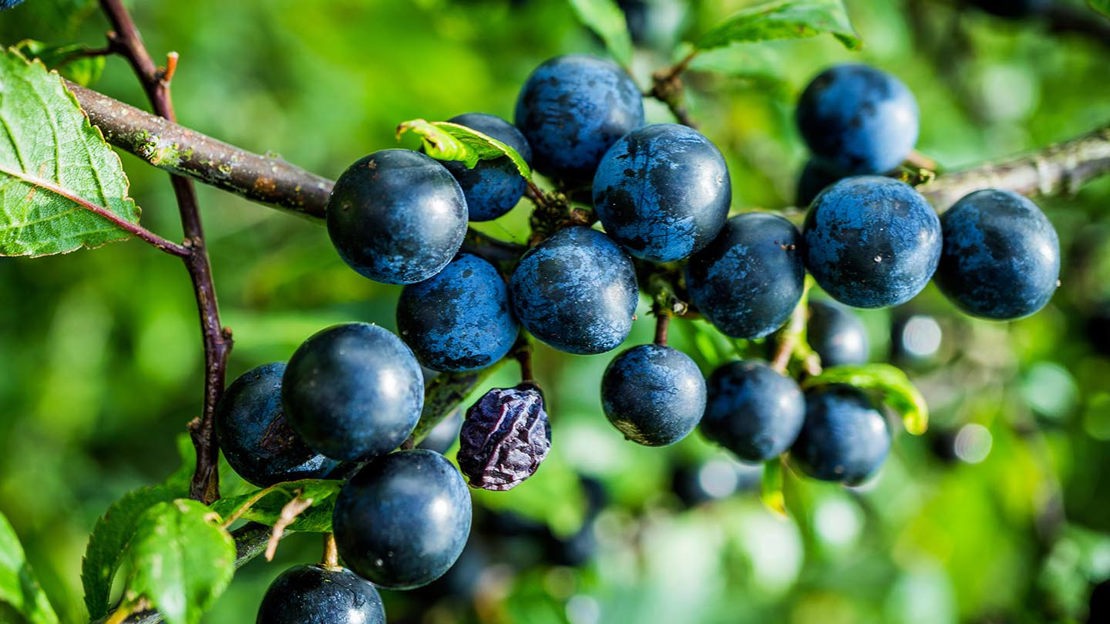
The blackthorn is best known for its crop of tart, acidic fruits known as sloes. These edible berries are too bitter to eat raw but are used to make the deep-red wintry drink, sloe gin.
How to use it: the general rule is to pick after the first frost as it softens the skins and helps to release the juices. You can get round this by picking early and freezing at home instead. Make our sloe gin recipe or try using sloes for whisky, jams and vinegar.
What to look for: the blue-black berries are ready for picking from the end of September to December. In some years, blackthorn trees along hedgerows and fields are heavy with fruit, while in other years they are less productive. This depends heavily on the weather, with sloes at their most abundant after the right balance of warmth and rainfall the previous spring.
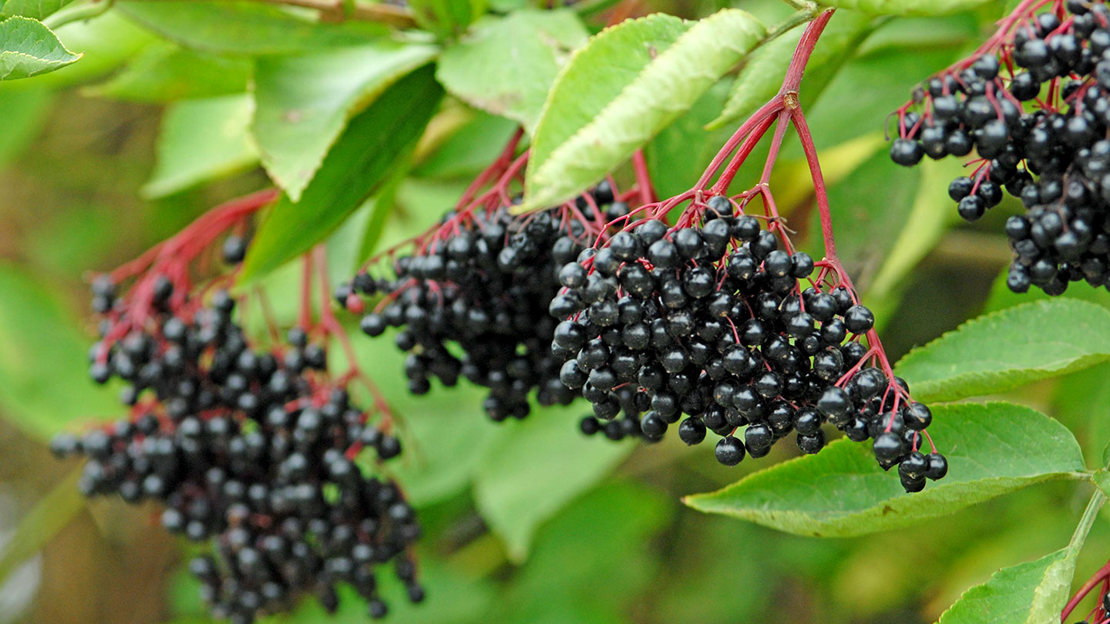
Said to ward off evil spirits and the Devil, elder trees are common throughout the UK and are recognisable by their distinctive, unpleasant smell. Elderberries are much kinder to the senses and have long been a forager’s favourite. September is a great time to collect them, with most elders fruiting between July and October.
How to use it: elderberries must be cooked to be edible as they are mildly poisonous if eaten raw, causing stomach upset. Elderberries are ideal for baked foods such as tarts and crumbles, or can be mixed with dark chocolate chunks to make delicious muffins. For a winter treat, try using them to make your own elderberry wine, which is rich, fruity and pairs well with cheese or red meat.
What to look for: elderberries are individually very small but develop in large clusters. Green at first, they turn a deep purple-black colour as they ripen. If you don’t want to use them right away, they can be frozen for a later date.
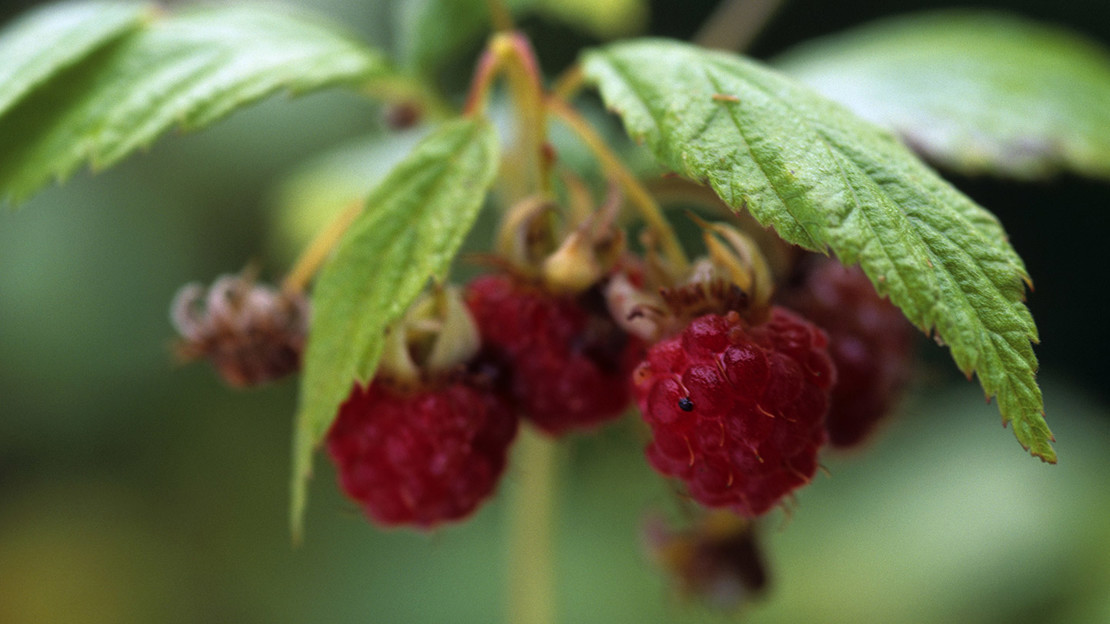
You’ve struck gold if you come across a hedgerow full of gleaming red raspberries. Wild raspberry is surprisingly widespread in the UK, though it can be difficult to separate native and cultivated populations that have escaped into the wild.
How to use it: wild raspberries have a sharper flavour than their tamer cousins. You may only find enough for a handful to be appreciated there and then. But if you find enough, you can use them in the same way you’d use shop-bought raspberries. They lend themselves well to sorbets in particular. The young leaves of raspberry plants can be made into herbal teas, traditionally used for their medicinal properties.
What to look for: once the fruit is ripe it is difficult to confuse a wild raspberry with anything other than an unripe blackberry. Look for it in open woodland, scrub, heathland and sometimes hedgerows. In the uplands, it grows on the drier ledges of basic crags and ravines, and below base-rich cliffs. Wild raspberries are generally smaller than cultivated varieties.
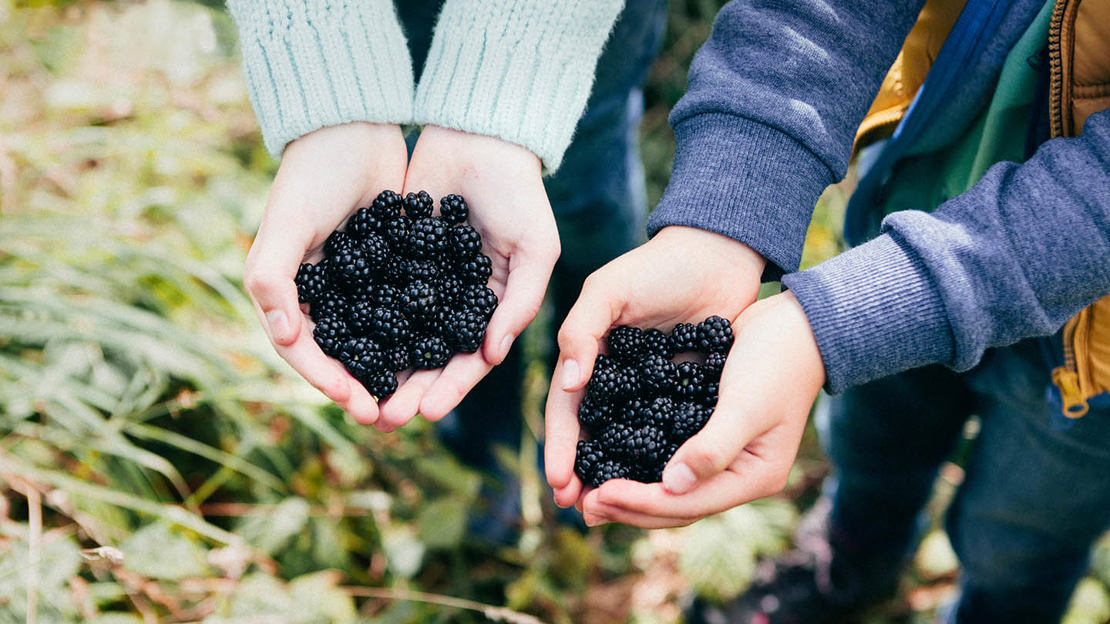
The blackberry is another versatile edible fruit commonly foraged in September. It’s much more abundant than wild raspberries or strawberries, making it easier to find and more sustainable to collect.
How to use it: there are countless wild food recipes that incorporate blackberries, from fruity crumbles and flapjacks, to sauces and sweet blackberry vinegar. Blending them into a blackberry ice cream can be a great way to enjoy the warm September afternoons. Alternatively, blackberries make a great snack eaten straight from the bramble (washing them first is advisable), or added to fruit salads, smoothies or yogurt.
What to look for: the best time to forage for blackberries is between late July and early October, when the ripe fruits turn a deep purple-black colour. Look for brambles in hedgerows and sunny woodland spots, taking care to avoid the thorns when picking the fruit.
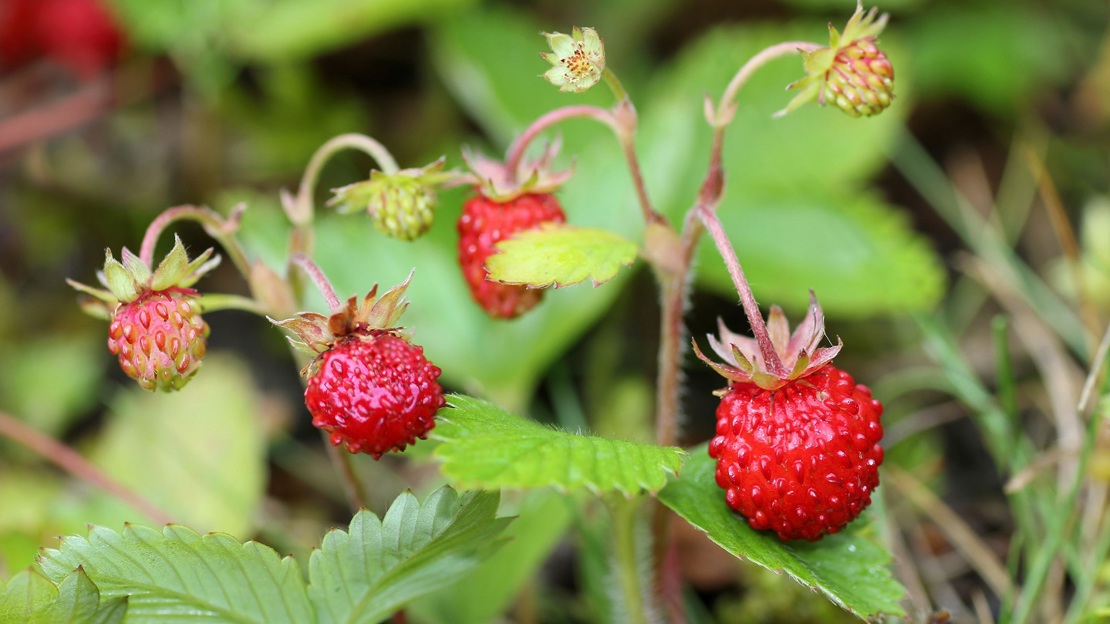
Our wild native strawberry is not an ancestor of cultivated strawberries. Its fruits are small, often only around 1cm across and its seeds sit on the surface (rather than sunken as in cultivated strawberries).
How to use it: it’s difficult to pick wild strawberries in any kind of quantity. The fragrant, scented flavour of wild strawberry is best savoured on its own. If you manage more than a handful you could add a sprinkling of sugar and cream. The addition of just one or two berries can add powerful flavour to puddings such as crème brûlée or panna cotta.
What to look for: look for the fruits from July onwards in deciduous woodlands and shady scrub on chalky soil. Local populations are often well kept secrets, since overharvesting and the illegal uprooting of wild strawberry plants for transplanting into gardens can quickly decimate stocks.
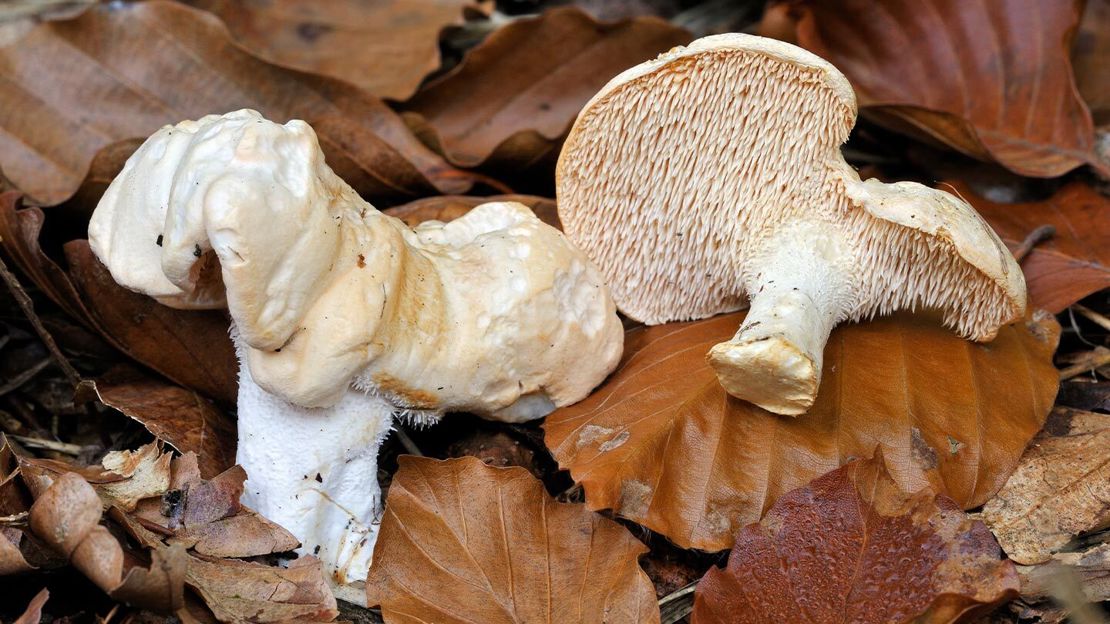
The hedgehog mushroom – or wood hedgehog, as it is often known – is a great mushroom for beginner foragers thanks to its recognisable appearance and lack of any poisonous lookalikes. It’s widely eaten and can often be found in French restaurants, where it goes by the name pied-de-mouton.
How to use it: hedgehog mushrooms have a firm, crunchy texture and bring a nutty flavour to dishes. The texture makes them a great meat substitute and they are often added to soups, casseroles or stews. Raw hedgehog mushrooms are edible but tend to have a slightly bitter taste.
What to look for: damp woodland is prime territory for hedgehog mushrooms, where they are usually found growing in small clumps or lines between late summer and late autumn. Look for their cream-coloured irregular caps and hedgehog-like spines beneath, standing on thick white stalks.
Experiment with your foraged finds in style. Every purchase from our kitchen and dining range helps fund our vital work to plant and protect trees and woods across the UK.
Shop now